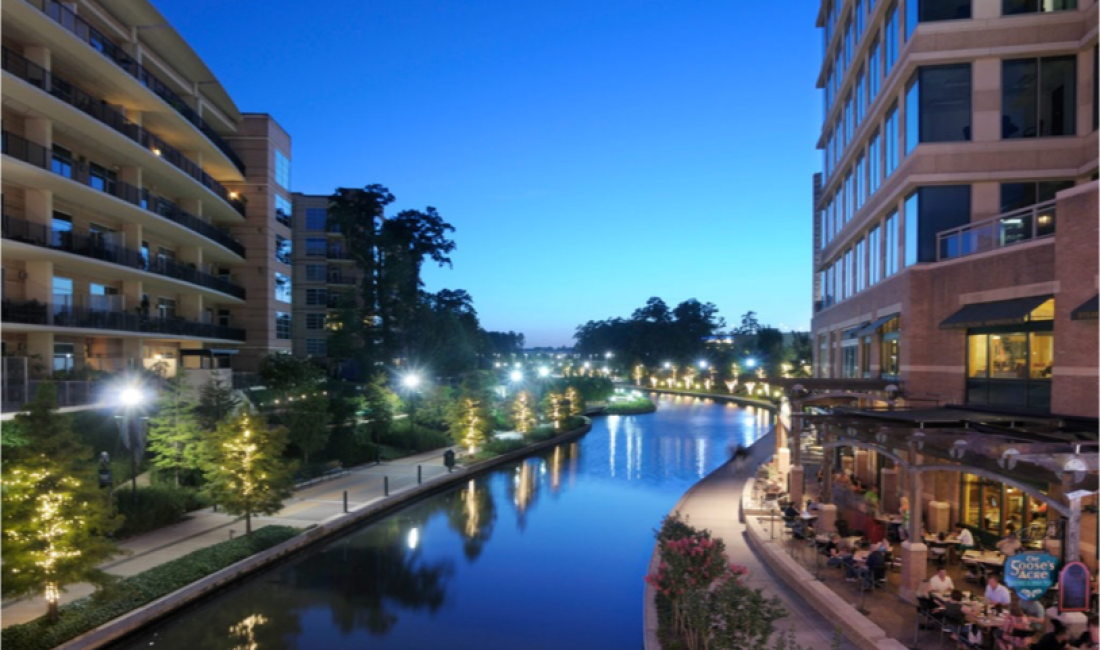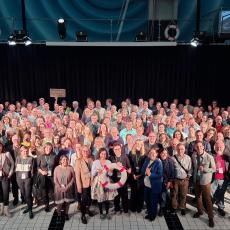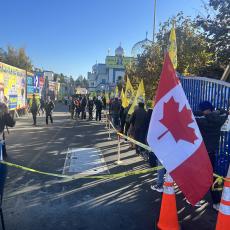Five Lessons From 150 Years of Trying To Build Better Suburbs
This essay is republished from The Future of Where. Please consider subscribing.
The other day I wrote about what we can learn from the century-old “new town” of Venice, Florida, near Sarasota, which was built according to a revered town plan from the legendary planner John Nolen.
Coincidentally, yesterday over on City of Yes, the estimable Ryan Puzcyki published an interview with Gabe Metcalf, the planning director for California Forever, the highly controversial proposed new own that would be located on the outskirts of the Bay Area.
And it got me thinking about the role new towns – that is, carefully planned communities in greenfield locations -- might assume as the “future of where” plays out in suburbs and exurbs across the country as the pandemic fades into the rearview mirror.
Like California Forever, this is not an uncontroversial topic among urban planners. The planning world generally has a bias in favor of infill development and against greenfield development; in fact, California’s entire policy regime is based on the assumption that all new growth and development can be accommodated by infill development.
Infill is a critical piece for many reasons: reducing greenhouse gas emissions, creating better urbanism, helping cities to a more sustainable fiscal situation. But infill alone probably isn’t going to accommodate future population and economic growth in California or throughout the United States. (Gabe himself has made a wild-ass guess that, even with the infill policy preference, half of all new development in California is in greenfield locations).
Building Suburbs Right
So if we are going to build new communities on the outskirts, then maybe we need to come to terms with how to do it right.
This is nothing new of course. Planners and designers have been theorizing about how to “build a better suburb” ever since suburbs were first invented after the Civil War. As any planning student can tell you, we’ve been through Ebenezer Howard’s “garden city’; John Nolen’s plans for Venice, Florida, and Mariemont, Ohio; Clarence Stein’s federal Greenbelt towns; 1960s new towns such as Irvine, Reston, Columbia and The Woodlands; the New Urbanists; master-planned suburbs such as Summerlin outside Las Vegas; and on and on.
The Woodlands Town Center outside of Houston
I’ve been thinking about new towns for a long time. In fact, my very first magazine article ever – so long ago it’s not online – was a piece for Planning magazine about Radisson, a New York State new town near Syracuse, where as I recall it was possible to bicycle from your home through the forested park-like setting to your job at the Anheuser Busch Brewery that anchors the community. I’ve seen now only two or three generations of new towns but I’ve also seen how they evolve. And so here are five lessons I’ve learned over the years about to make new towns work.
Bill’s 5 Rules For New Towns
1. You need really deep pockets
The whole point of a new town is to build a better suburb, which means better infrastructure and more community amenities than you find in the typical Levittown-style subdivision, which usually only has a school and maybe a shopping center. But that requires a huge up-front investment before any revenue starts flowing in from homebuilding lot sales and rent from non-residential development.
The main reason that the federal government created the new towns program in the ‘70s – and states like New York did the same – was because most new towns go bankrupt trying to put in all the infrastructure up front (and also servicing the debt from buying the land in the first place). The idea of the federal program was to provide low-cost financing that would make it easier for undercapitalized private developers like Bob Simon of Reston in Virginia to get through the lean years. But even that didn’t work: A lot of the federally financed new towns went bankrupt too. Eventually they got built, but it took a long time and lots of people lost a lot of money.
Just about the only new town in the United States that avoided this fate completely was Irvine, in Orange County outside of Los Angeles. And that was because the Irvine Family had owned an enormous amount of contiguous land since the 19th Century, so the Irvine Company didn’t have any carrying cost on the land.
2. You need an important job center up front
All the way back to Ebenezer Howard, the new town dream has been to be a self-contained community where people, as the saying goes, “live, work, shop, and play”. Traditionally, of course, suburbs have mostly been where people live. And there’s been a typical evolutionary patern: first home the houses and maybe parks and schools, then come the shopping centers, and finally – once the community has been established – companies will begin to take a change on locating there.
By then, however, an out-commuting pattern has been established that’s not likely to change. And (more about this later) when the jobs come and the bosses arrive, the price of housing shoots up so that the regular folks who work at the jobs can’t afford to live there; they commute in from someplace else.
Irvine fell into this trap even though it had a major job center at the very beginning – the University of California, Irvine, which still provides the community’s core in many ways. Even so, when companies arrived in Irvine years later, it became unaffordable, which is why so many people drive 40 or 50 miles from Riverside County.
And there’s really no way to legislate your way out of the. The new town of Mountain House – like California Forever, on the edge of the Bay Area – was approved by local officials with the proviso that additional houses couldn’t be built until jobs arrived. That never really happened, of course, and now Mountain House is still mostly a residential suburb. (I wrote about Mountain House in my Substack piece about “the exurban metropolis” a few months ago.)
3. You need lots of different types of housing
A typical suburban subdivision is pretty homogenous and therefore income-segregated: Most of the houses in the subdivision are similar and cost the same amount of money, so people of similar incomes move in to houses that are alike. A large master-planned community does have a wide variety of housing types, but they are usually segregated from each other.
But in order to attract the employers and be viewed as a place where lots of types of employees can live, you need everything in close proximity to one another – McMansions, starter homes, townhomes, condos, apartments, accessory dwelling units. If you don’t provide this great variety, then, again, you’ll create a massive out-commuting or in-commuting pattern (or, worse yet, both) and you’ll never create a true multi-generational, multi-class community that can bring a wide variety of people together in a way that strengthens their bonds to one another.
4. You need to keep it affordable
To follow up from the discussion above, the ironic thing about a new town is that if it gets built backwards – houses first, jobs later – it will almost inevitably become unaffordable over time. The employers move in, and mere proximity to the jobs jacks up the home prices, leading to an unfortunate in-commuting pattern. A variety of housing types helps, but if a community becomes desirable, all the housing types will become expensive. (Believe it nor, Beverly Hills was a new town circa 1910, with single-family houses north of Wilshire and apartments to the south, but now everything in town is out of sight.)
So the only way to preserve affordability is, for better or worse, find a way to deed-restrict some units by income. A big enough developer with deep enough pockets and determination to provide affordable housing can probably do this – but Irvine didn’t, and I’ve seen other developers start out with good intentions on this front only to abandon them when they began to have trouble serving the debt on the land. More likely, it will require government involvement and government subsidies to maintain affordability over time. In other words, a public-private partnership.
5. You have to be flexible.
The point of my piece about Venice, Florida, the other day was that it evolved over time in ways that John Nolen never expected – in part because the Florida land boom of the 1920s ended and the developer had to sell off lots quickly and get out. The result was not the Northern Italian motif he expected but a mixture of Italianate and Midcentury Modern (which is, by the way, pretty cool.)
And virtually all the new towns that are still around today have succeeded by adapting over time, rather than sticking slavishly to their original plan. Both The Woodlands and Reston have dense, high-rise, walkable town centers that I’m sure their original developers never envisioned. And Irvine has deftly moved in its traditionally non-residential areas from industrial and warehousing to mid-rise office buildings to mixed-use with a lot of housing, thus adjusting with the times. I always say you can’t freeze-dry a town, and this is especially true of new towns: They must evolve to thrive.
Can We Truly Learn These Lessons?
These are lessons that people who develop master-planned communities, new towns, and “better suburbs” around the country think about all the time. Sometimes the result is decidedly suburban (though high-quality) like Summerlin; sometimes it is a sincere, though somewhat manufactured, attempt to create a truly self-contained community, like The Woodlands (which has been helped enormously by Exxon Mobil’s huge corporate campus, a gigantic job center that’s not in The Woodlands but adjacent to it.) It would do California Forever well to pay attention to these five lessons – and it would do the rest of us well to hold greenfield developers accountable to these lessons so that result truly is a better suburb and not just more schlock.



